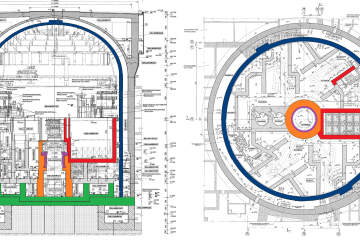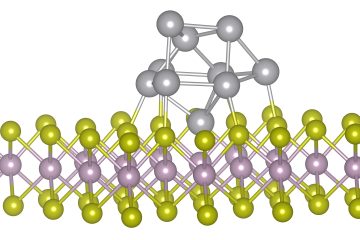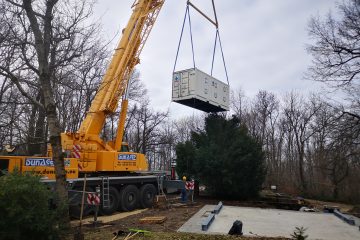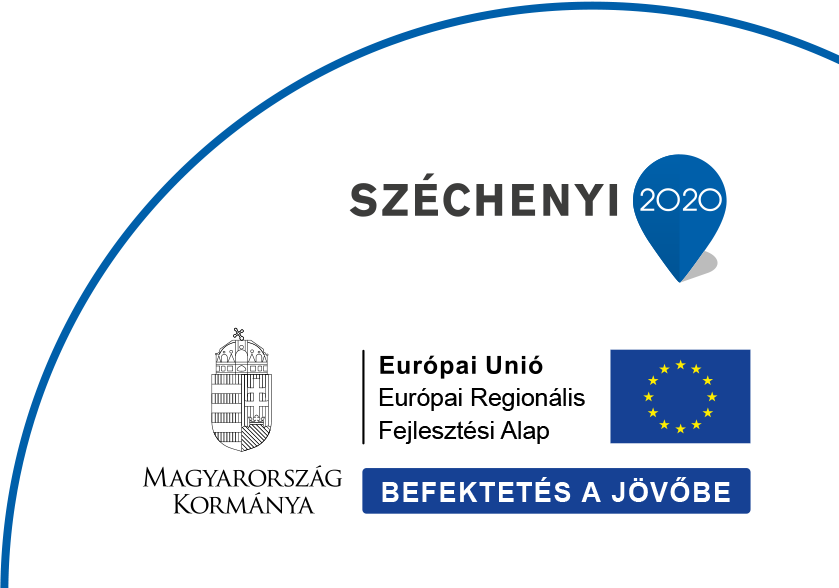Record results announced today are the clearest demonstration in a quarter of a century of the potential for fusion energy to deliver safe and sustainable low-carbon energy.
Researchers from the EUROfusion consortium – 4,800 experts, students and staff from across Europe, co-funded by the European Commission and including researchers from ELKH Centre for Energy Research in Hungary – used the Joint European Torus (JET) device to release a record 59 megajoules of sustained fusion energy.
This achievement on JET, the largest and most powerful operational tokamak in the world at the UK Atomic Energy Authority (UKAEA) site in Oxford, more than doubles the previous fusion energy record of 21.7 megajoules set there in 1997. It comes as part of a dedicated experimental campaign designed by EUROfusion to test over two decades’ worth of advances in fusion and optimally prepare for the start of the international ITER project.
The record and the scientific data from these crucial experiments are a major boost for ITER, the larger and more advanced version of JET. ITER is a fusion research project based in the south of France. Supported by seven members – China, the European Union, India, Japan, South Korea, Russia and the USA – ITER aims to demonstrate the scientific and technological feasibility of fusion energy.
As pressures mount to address the effects of climate change through decarbonising energy production, this success is a major step forward on fusion’s roadmap as a safe, efficient, low carbon means of tackling the global energy crisis.
Dr Bernard Bigot, Director General of ITER, said:
“A sustained pulse of deuterium-tritium fusion at this power level – nearly industrial scale – delivers a resounding confirmation to all of those involved in the global fusion quest. For the ITER Project, the JET results are a strong confidence builder that we are on the right track as we move forward toward demonstrating full fusion power.”
Tony Donné, EUROfusion Programme Manager (CEO), said:
“This achievement is the result of years-long preparation by the EUROfusion team of researchers across Europe. The record, and more importantly the things we’ve learned about fusion under these conditions and how it fully confirms our predictions, show that we are on the right path to a future world of fusion energy. If we can maintain fusion for five seconds, we can do it for five minutes and then five hours as we scale up our operations in future machines.
“This is a big moment for every one of us and the entire fusion community. Crucially, the operational experience we’ve gained under realistic conditions gives us great confidence for the next stage of experiments at ITER and Europe’s demonstration power plant EU DEMO, which is being designed to put electricity on the grid.”
Dr. Sándor Zoletnik, Head of Fusion Plasma Physics Department, Centre for Energy Research, Eötvös Loráld Research Network, said:
Fusion energy production has been the dream of researchers for many decades, which was first proposed by Ede Teller of Hungarian origin. It was clear from the beginning that the task is complex, but technological and theoretical advances have been continuous. As early as the 1970s, it became clear that large and complex experimental devices would be neccessary, which could only be achieved through extensive international cooperation. The most important example of this is the JET facility built by the European Union and operated by an international team, including Hungarian researchers. The current result gives confirmation for the Hungarian fusion research community that it is worthwhile increasing the domestic work invested in the ITER experiment.
Volker Naulin, Head of the Fusion Science Department at EUROfusion, said:
“As EUROfusion we designed this experimental campaign at JET to optimally prepare for the start of ITER by investigating the energetic processes that will come into play there and to prepare the next generation of fusion researchers. The experiments confirmed our predictions, motivating us in doing our best to ensure a timely success of ITER operation. The results are support for an early decision for a European DEMO power plant, as fusion is needed for long term decarbonisation of our energy supply”
Fusion energy’s potential
Fusion, the process that powers stars like our sun, promises a near-limitless clean electricity source for the long term, using small amounts of fuel that can be sourced worldwide from inexpensive materials. The fusion process brings together atoms of light elements like hydrogen at high temperatures to form helium and release tremendous energy as heat. Fusion is inherently safe in that it cannot start a run-away process
JET of unique importance
The Joint European Torus (JET) fusion experiment – which can create plasmas reaching temperatures of 150 million degrees Celsius, 10 times hotter than the centre of the sun – is a vital test bed for ITER, one of the biggest collaborative science projects in history. JET can reach conditions similar to those in ITER and future fusion power plants, and is the only operational tokamak in the world that can use the same deuterium-tritium (D-T) fuel mix planned for those devices.
Megajoules and Megawatts explained
In its recent record-breaking experiment, JET produced a total of 59 Megajoules of heat energy from fusion over a five second period (the duration of the fusion experiment). During this experiment, JET averaged a fusion power (i.e., energy per second) of around 11 Megawatts (Megajoules per second).
The previous energy record from a fusion experiment, achieved by JET in 1997, was 22 megajoules of heat energy. The peak power of 16MW achieved briefly in 1997 has not been surpassed in recent experiments, as the focus has been on sustained fusion energy.
About the Centre for Energy Research
The aim of the Centre for Energy Research (EK) is to carry out basic, applied and developmental scientific research of international standard in the fields of nuclear energy, functional materials and nanosystems, environmental protection, energy efficiency and energy security.
Several EK laboratories, primarily the Fusion Plasma Physics and Fusion Technology Laboratories are involved in fusion research projects in Europe and around the world, such as in the UK, Germany, the Czech Republic, Japan, China or South Korea, and are designing and developing a number of components for ITER.
Hungarian researchers and companies are developing a security system for ITER. The shattered pellet injector will be designed to stop swiftly the fusion reaction before it can damage the interior wall of the device. Hydrogen ice projectiles, also known as pellets, are shot into the hot material at rifle bullet velocity at minus 260 degrees Celsius. Similarly to a shotgun, it scatters the target with small pieces of ice, in function, like a kind of powder fire extinguisher. The prototype of the pellet shooting device can be built in Budapest as the result of the research of the past decade. Researchers of the EK will make a significant contribution to the future safe operation of ITER by testing the production, acceleration and shattering of pellets, the engineering design of the launcher and the development of the necessary experimental and diagnostic methods.
More info: https://www.ek.hun-ren.hu/fuzios-plazmafizika-laboratorium/
https://www.ek.hun-ren.hu/fuzios-technologia-laboratorium/ Social media: Facebook, Instagram, Linkedin, Twitter, Youtube, https://magfuzio.hu/ Facebook, LinkedIn, Twitter, Youtube



